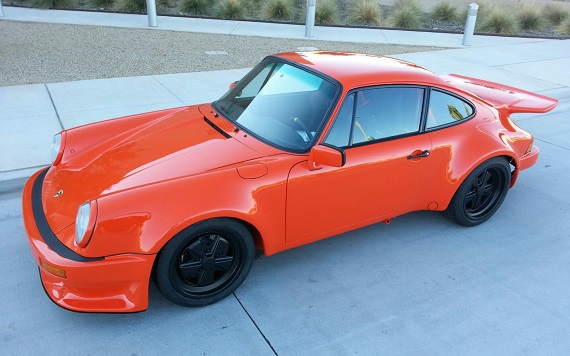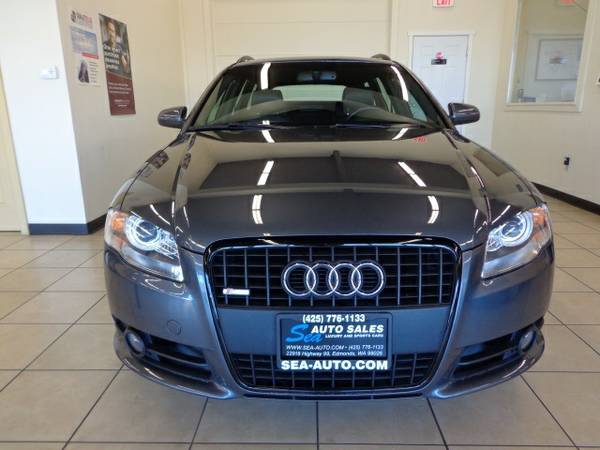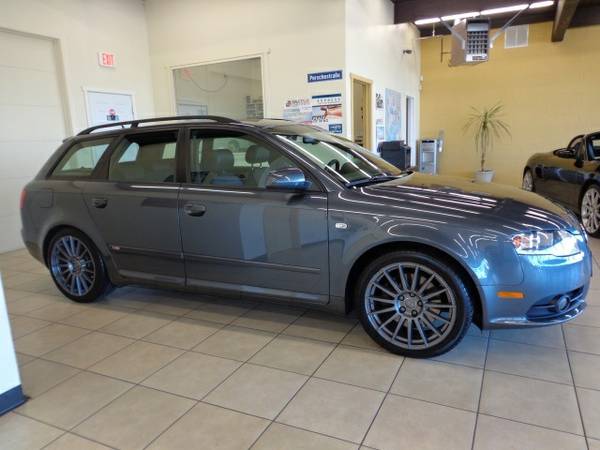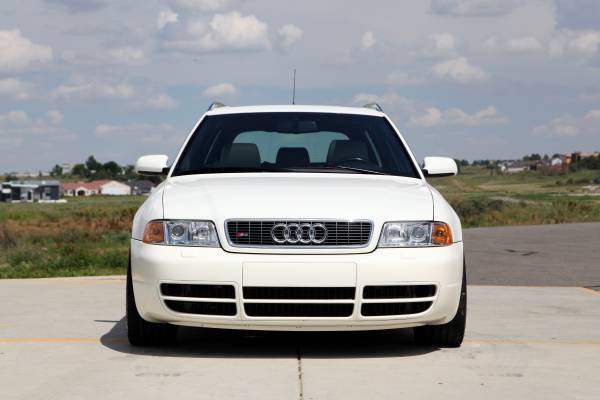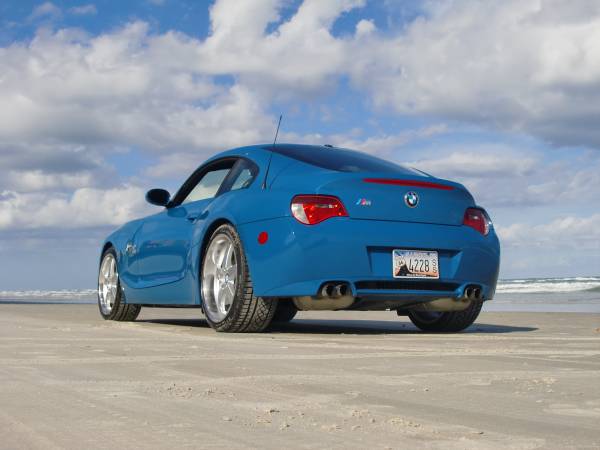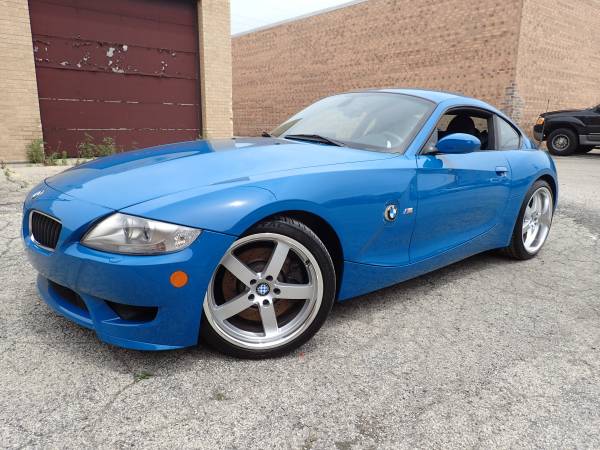If you want to understand why Ruf managed to achieve its own status as a manufacturer in Germany, it can at least partly be explained by considering the R Turbo. Not satisfied with Porsche’s own twin-turbocharged variant of the 996, Ruf made their own. They completely disassembled the 3.6 liter flat-6, reworked a fair amount of the internals including the Variocam system and turbochargers, then revised the electronics by remapping the Bosch ECU. Then they fit this upgraded engine, in keeping with their history, into the narrow-body of the normal 911 Carrera. In order to do this, it required utilizing both GT2 and GT3 parts to make the package come together. You could opt for different states of tune starting with 520 horsepower – some 100 more than the standard Turbo, making the R Turbo one of the fastest cars on the planet. Take a look at the speedometer, for example, which sweeps well past 200 m.p.h.. Yes, the R Turbo could get there, too – with a reported 217 m.p.h. terminal velocity. 0-60 was achieved in under 4 seconds and in between, very little could stay with the thin Ruf. To deal with all of this speed, of course Ruf fit their own suspension coupled with bespoke Speedline wheels and some pretty giant Brembo brakes. On top of all that, you could select new R Turbo as a Cabriolet – something Porsche themselves wouldn’t offer until 2004. And as they always have, the modifications Ruf made were as seamless as the factory bits with accompanying reliability. It made for one quite special package:
Author: Carter
A friend of mine and I were sitting around recently, musing over what kind of 911 we’d own if we had the money. The genesis of this was his Porsche 911 ownership; he had a ’85 911 cabriolet, and while he enjoyed the car it was a bit….well, basic in terms of creature comforts and ride quality compared to his current M3. There’s some charm in that, but having driven both I’d agree that the M3 is the better day-to-day car in nearly every way. But both of us agree that, money no object, the idea behind the Singer 911s is pretty compelling; take a more modern 911 and give it the classic look, but keep most of the modern amenities plus the modern powertrain, brakes and handling. It’s become quite a popular recipe, and with classic 911 values seemingly on an endlessly rising trajectory it’s quite viable to restore or resto-mod a 911 into a dream ride and make your money back, if not then some. Today’s example is pretty interesting and unique, though – I believe it’s the first time I’ve seen someone take a 930 chassis and turn it into a “regular” 911. Backdating the late ’70s look to the early 1970s and adding in some of the iconic IROC bits, the builders took modern Fuchs replicas and a built up 3.8 naturally aspirated motor and created one pretty awesome package:
CLICK FOR DETAILS: 1979 Porsche 911 on eBay
4 CommentsIf you follow these pages, neither the names RS4 or Avant should be particularly new to you. Audi’s B5 generation fast wagon wasn’t the first to wear the RS badge, but it was the first fully quattro GmbH RS car. In the spirit of the RS2 built in conjunction with Porsche and the S6 plus which moved production in house to the quattro GmbH subsidiary, Audi utilized the VAG group acquisition of Cosworth to up the boost on the twin-turbocharged V6 to produce the best part of 400 horsepower. But while the RS2 and S6 plus had rather discrete changes outside to signify how special they were, the RS4 added vents, slats, big flares and giant wheels to back up the added performance. It was the change that launched a thousand dreams, as countless B5 S4 owners attempted to recreate the package that wasn’t brought to the U.S.. A few have made it here through back channels and we’ve written up previously the huge premium they command over regular S4s, but the newer generations of performance cars have dimmed the concentration on the older wonder Audis. Still, even today the RS4 is a pretty potent performance machine and getting closer to being legally importable to the U.S.. But of course our neighbors to the north have more lax importations laws, so RS4s are making their way into Canada as we speak. Additionally, really good examples of the regular S4 Avants are drying up as well. Today, I have an interesting comparison – a just imported, low mileage RS4 Avant versus a fully upgraded, low mileage S4 Avant – likely one of the nicest in the U.S.. What’s the difference in value today?
CLICK FOR DETAILS: 2001 Audi RS4 Avant on Autotrader Canada
3 CommentsSomething interesting is occurring in the BMW world. As the E36/8 M Coupe skyrockets in value and collectability – especially the very limited S54 versions – for some reason, it’s successor isn’t. Now, both generations of M Coupes and Roadsters are love it or hate it designs, but the early cars – even though stylistically they have some typical 90s weak spots. Those fender vents, for example, have become a cliche stick-on applique to all the best ‘hood Accords and Maximas. To me, the replacement for the Z3 was edgier but more handsome. It still looks modern and honestly I think it could reasonably still fit into the design language of the current BMWs. The M Coupe managed to escape the period which many enthusiasts characterized as the worst styling period for BMW as the Belle of the Ball. And the layout and drivetrain wasn’t updated, instead running the end of the run naturally aspirated screamer S54 through a manual gearbox and driving only the rear wheels. Only some 1,800 of them were imported to the U.S., too – guaranteeing their exclusivity, they seemed to be a natural collector status BMW right out of the box. But for many more, the E86 M Coupe was more classic GT sports car than the bread delivery van styling of E36/8. Throw in a similarly love it or hate it rare color like Laguna Seca Blue, and you’ve got either a travesty against automobiledom or a car with serious collector potential:



